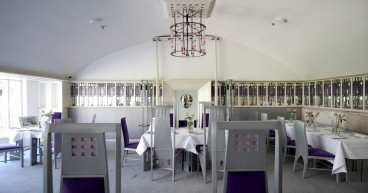0R15 8405.0 2.55% 0R1E 7673.0 1.5081% 0M69 18589.7598 47.655% 0R2V 223.4 10008.5973% 0QYR 1241.5 2.5186% 0QYP 436.27 0.9884% 0RUK None None% 0RYA 1392.0 4.6617% 0RIH 159.25 0.0% 0RIH 162.3 1.9152% 0R1O 189.56 10050.4685% 0R1O None None% 0QFP 10725.5898 112.8093% 0M2Z 265.6349 -0.1935% 0VSO 27.73 -22.1177% 0R1I None None% 0QZI 536.0 0.0% 0QZ0 220.0 0.0% 0NZF None None% 0YXG 164.56 1.0771%
World news
Saviours of historic Mackintosh tea room made MBEs for restoration work

Image Source: PAMEDIA
Two people pivotal in saving one of Charles Rennie Mackintosh’s historic tea rooms in the heart of Scotland’s largest city have been made MBEs.
Celia Sinclair Thornqvist and Professor Pamela Robertson have both been given the rank as part of the King’s New Year Honours in recognition of their work helping to restore the Scottish architect’s original Willow Tea Rooms in Glasgow’s Sauchiehall Street.
The A-listed building – now trading as Mackintosh at the Willow – was designed by the architect and is his last surviving tea rooms.
Originally opened in 1903, the now King and Queen Consort re-opened the building in 2018 after a £10 million restoration of the A-listed building.
Ms Thornqvist, founder and patron of The Willow Tea Rooms Trust, said she was “deeply honoured” to be recognised, but added that everyone involved in bringing the team rooms building back to life “deserve thanks and congratulations”.
“When I learned in 2014 that this beautiful, historic and important much-loved building might be lost to Glaswegians and future generations I simply felt impelled to do something about it,” she said.
As well as now operating as Charles Rennie Mackintosh and his patron Catherine Cranston originally intended, the tea room hosts a shop, education centre, exhibition and meeting tooms as part of the facility.
Professor Robertson, who is an honorary professional research fellow at the University of Glasgow, said she had been involved with researching Mackintosh’s architectural legacy for years but the Willow Tea Rooms project was a “highlight”.
“It was a fascinating and at times frustrating detective puzzle to work out and replicate the original layouts and decorative schemes,” she said.
“In partnership with other experts, and many skilled and dedicated craftsmen and contractors, colour, texture and light, as well as furnishings, light fixtures, decorative panels, even cutlery have been reintroduced, bringing the tea rooms back to vibrant life.
“What is special for me is that we all now have the unique opportunity to experience at first-hand the outstanding achievements of Mackintosh and Margaret Macdonald, and tea room entrepreneur, Catherine Cranston – all for the price of a cup of tea.”